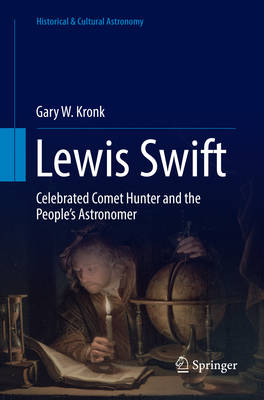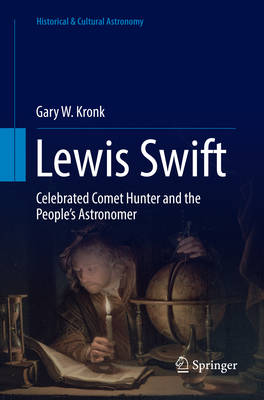
- Afhalen na 1 uur in een winkel met voorraad
- Gratis thuislevering in België vanaf € 30
- Ruim aanbod met 7 miljoen producten
- Afhalen na 1 uur in een winkel met voorraad
- Gratis thuislevering in België vanaf € 30
- Ruim aanbod met 7 miljoen producten
Zoeken
Omschrijving
This biography covers the life of Lewis Swift (1820-1913), who discovered 13 comets and nearly 1,200 other deep sky objects. All 13 comets found by Swift now bear his name, including three periodic comets with periods of 6 years (11P/Tempel-Swift-LINEAR), 9 years (64P/Swift-Gehrels), and 133 years (109P/Swift-Tuttle).
Swift's enthusiasm and success as an amateur astronomer helped make him famous in the United States. With the help of others, Swift was able to buy a 16-inch refractor, the third largest telescope in the United States at the time. Hulbert Harrington Warner built "Warner Observatory" to house this telescope. As a prolific writer and lecturer, Swift's stories appeared in newspapers and magazines, while his lectures showed that he was able to explain anything in a way that everyone could understand.
When Warner went broke during the "Panic of 1893," Swift was forced to leave his home. Almost two dozen invitations arrived from aroundthe United States asking him to bring his telescope to their city, and he eventually accepted the invitation of Californian Thaddeus Sobieski Constantin Lowe.
This book highlights Swift's valuable contributions to astronomy before failing eyesight forced him to give up this profession. In addition to detailing Swift's life, biographical material is also provided for a number of individuals who were influenced by Swift. This includes his son, Edward, who was discovering deep sky objects as a teenager.
Swift's enthusiasm and success as an amateur astronomer helped make him famous in the United States. With the help of others, Swift was able to buy a 16-inch refractor, the third largest telescope in the United States at the time. Hulbert Harrington Warner built "Warner Observatory" to house this telescope. As a prolific writer and lecturer, Swift's stories appeared in newspapers and magazines, while his lectures showed that he was able to explain anything in a way that everyone could understand.
When Warner went broke during the "Panic of 1893," Swift was forced to leave his home. Almost two dozen invitations arrived from aroundthe United States asking him to bring his telescope to their city, and he eventually accepted the invitation of Californian Thaddeus Sobieski Constantin Lowe.
This book highlights Swift's valuable contributions to astronomy before failing eyesight forced him to give up this profession. In addition to detailing Swift's life, biographical material is also provided for a number of individuals who were influenced by Swift. This includes his son, Edward, who was discovering deep sky objects as a teenager.
Specificaties
Betrokkenen
- Auteur(s):
- Uitgeverij:
Inhoud
- Aantal bladzijden:
- 428
- Taal:
- Engels
- Reeks:
Eigenschappen
- Productcode (EAN):
- 9783319876191
- Verschijningsdatum:
- 18/08/2018
- Uitvoering:
- Paperback
- Afmetingen:
- 155 mm x 24 mm
- Gewicht:
- 676 g

Alleen bij Standaard Boekhandel
+ 288 punten op je klantenkaart van Standaard Boekhandel
Beoordelingen
We publiceren alleen reviews die voldoen aan de voorwaarden voor reviews. Bekijk onze voorwaarden voor reviews.








